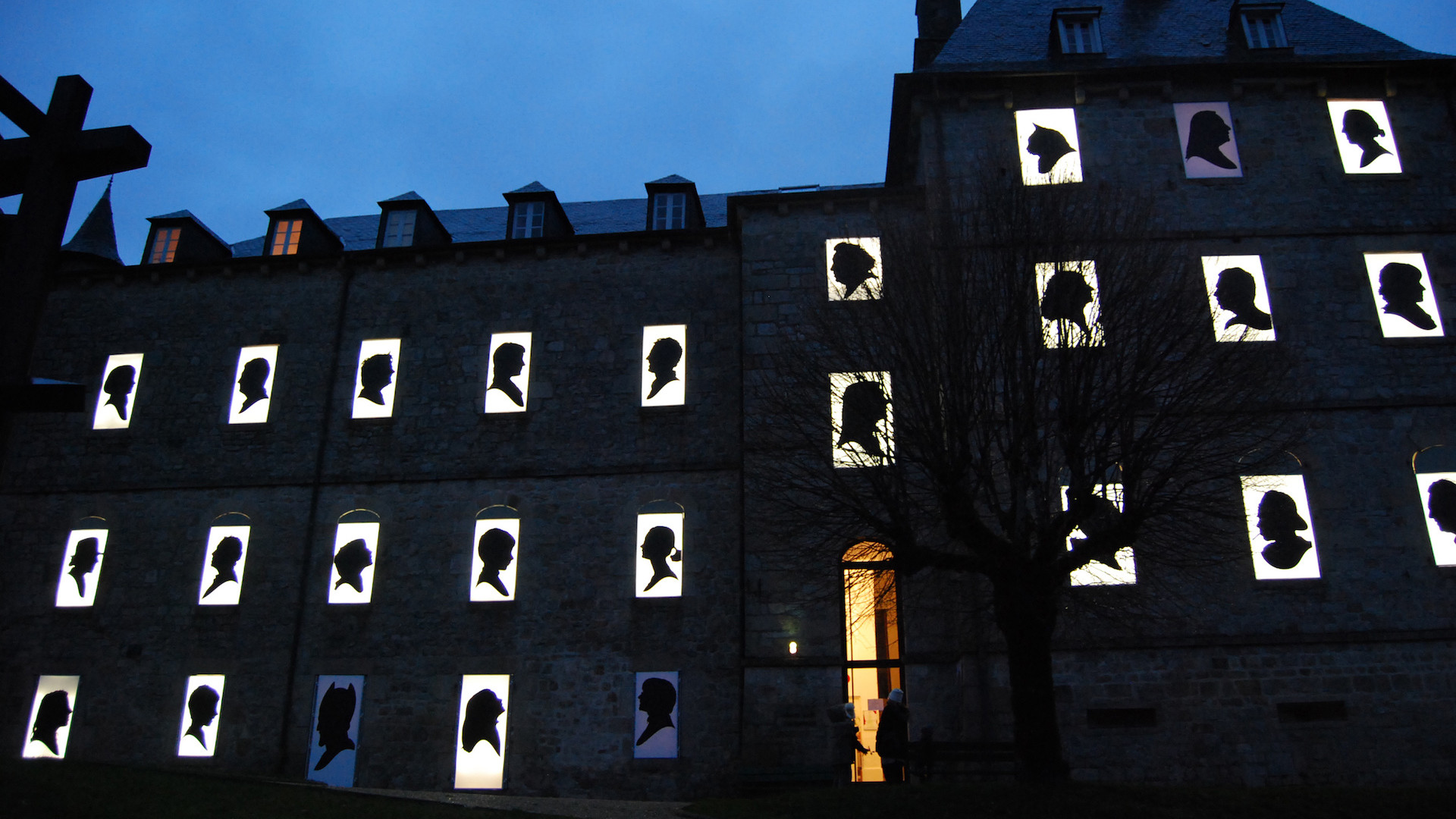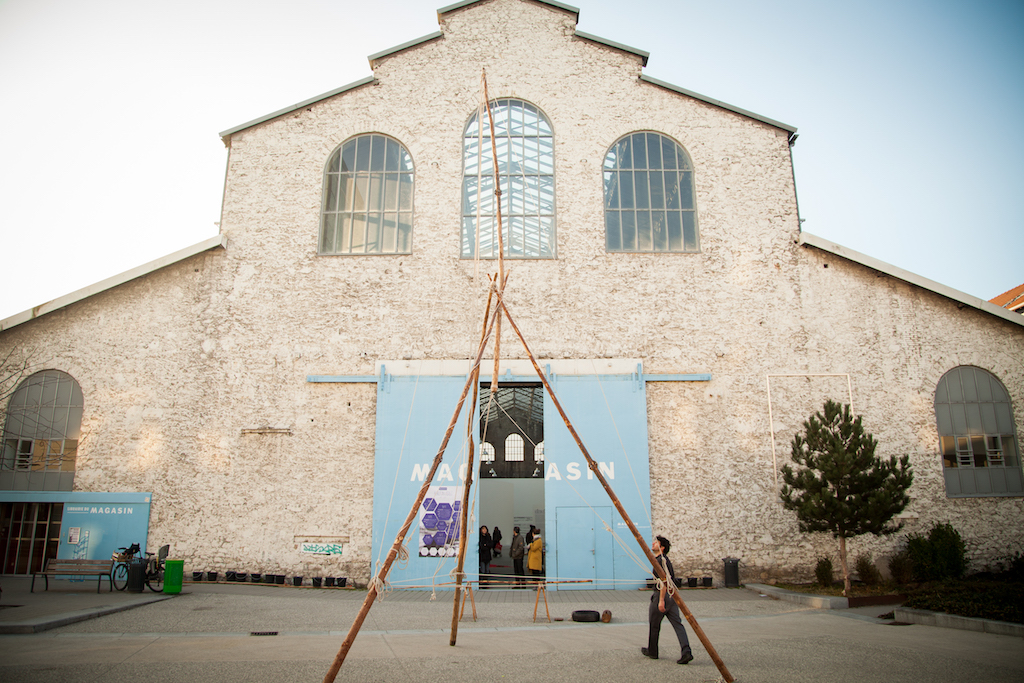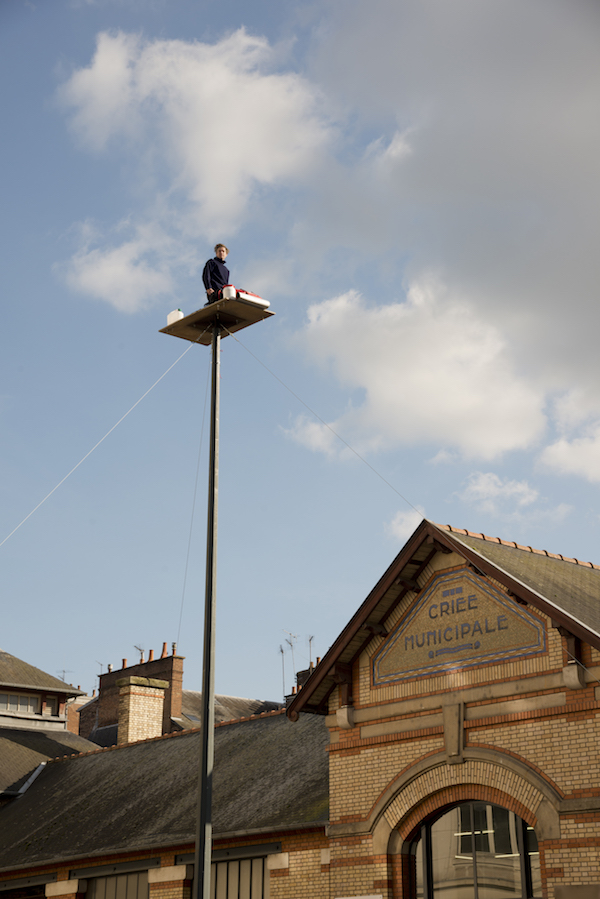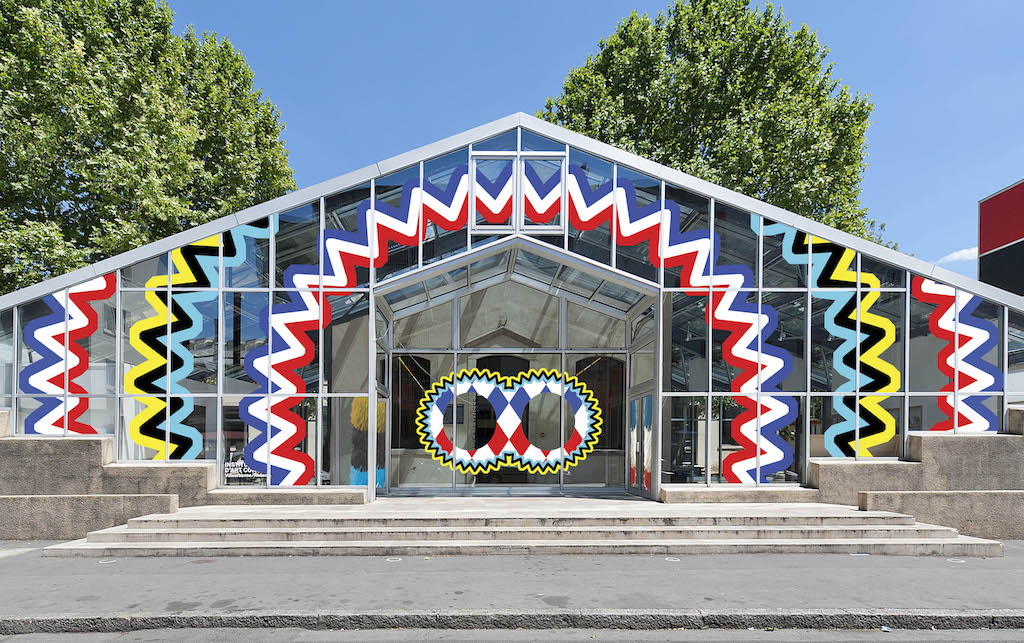Sophie Legrandjacques

d.c.a.1 celebrated its 25th anniversary at the Palais de Tokyo in December, thus reminding us that this Parisian venue is part of the French art centres network, and thereby sidestepping the criticism of a French-style centralism which those celebrations held in the capital and not in the regions might legitimately have given rise to. d.c.a. encompasses some fifty members which it tries to imbue with a collective dynamic by initiating projects in order to federate them. The announcement of the creation of a new label (Contemporary Art Centre of National Interest) under the aegis of the Ministry of Culture shows d.c.a.’s desire to work with the legislative procedure of the Freedom of Creation, Architecture and Heritage law, and also offers an opportunity to return to the fundamental features of the art centres in the context of a contemporary scene that is constantly adopting new functions and new players. Sophie Legrandjacques, who has recently been elected president of the network and is also the director of the Grand Café in Saint-Nazaire, talks about the challenges facing the art centres in the years to come, such as the weakening of structures which the new label is intended to remedy, the much-needed grooming of a model which emerged some forty years ago, and moving beyond certain taboos, such as the introduction of private contributions within institutions that have long been resistant to this interference. The interview below finds a president confident in the capacity for adaptation and re-invention in institutions which have managed to hold on to their deep-seated commitment to contemporary art and guarantee its freedom of operation.
Eighteen years ago, for the opening of the Palais de Tokyo, Jérôme Sans and Nicolas Bourriaud published a manifesto book containing the replies to the question posed to a host of institutional partners, artists and heads of associations about how these latter saw the future form of an art centre.2 Today, I am tempted to go back to that question and ask: what have the art centres of the 1990s become?
It has to be said that three or four decades after the arrival of the first art centres, not only are they still with us, but there are above all more and more of them. The magnificent experiments of pioneers such as Le Consortium in Dijon and the Nouveau Musée in Villeurbanne, for example, have been watched and carried on by many associations and local authorities all over France, and today there are about sixty contemporary art centres (fifty of which are part of d.c.a.). They form a fantastic artistic landscape on many scales and in extremely varied territorial, social and cultural contexts. This is why, in the end of the day, asking the question about the form of current and future art centres serves little purpose. Essentially, art centres lay claim to the fact that they do not correspond to any predetermined structure. Each one, wherever it may be, with its history, its artistic direction, its artists and its various forms of public, is permanently inventing and re-inventing itself. What counts are the specific briefs which define them. d.c.a. is basically a network of organizations which are not, to all appearances, alike, but which share common missions and values.
The major question at this 25-year stage has to do with the famous label: opponents think that labelling an art centre means taking away its freedom and its capacity to permanently re-invent itself and inter-react with society, a way of standardizing this eternal troublemaker and keeping it in its place…which, in a way, is a “minor death”, isn’t it?
A minor death happens above all when an art centre is forced to close because it is not being supported by people committed to defending freedom to create and experiment. The closing of a dynamic and historic art centre like the one in Quimper in 2016 is an example of this. This is why, even if at the outset electing to be for or against a label was a real subject at d.c.a., for the obvious reasons you have given, we have collectively decided to be proactive in the development of the label, so that our voice can be heard, reckoning that doing nothing would be the best way of ensuring that nothing will change for us. After the ministerial circular of 2011, regarding the contemporary art centres, drawn up at that time with d.c.a., it was important to seize the chance to use a decree and an order, which is to say the texts concerning rules and regulations which result from a law, here the Freedom of Creation, Architecture and Heritage law, to set forth the missions and ambitions supported by our organizations. The d.c.a. network, which is 25 years old today, is keen to demonstrate its maturity, and has assumed its responsibilities. And people have listened to us. We are satisfied with the content of the texts promulgated, precisely because this label does not standardize. It does not make all the briefs the same, but, on the contrary, it casts in stone the fact that an art centre is a living organization which is forever evolving. At a time when some centres are still vulnerable in their local region, we must see it as a tool for guaranteeing and developing our organization by bringing partners together around a project recognized as being of general interest. This is how this label has been jointly conceived by the Ministry of Culture and d.c.a.

Jordi Gali, Ciel. « Horizon (2016) », Exhibition and events in/on/under/on the sides/in the middle of Le MAGASIN des horizons, Grenoble. Photo : Camille Olivieri.
But this nevertheless implies that any new d.c.a. candidate will have to envisage responding, at a given moment, to the criteria laid down by this new label. This runs slightly counter to the possibility of incorporating decidedly innovative forms… Have there, incidentally, been any new centres recently joining the ranks of d.c.a.?
The latest centres to have joined the d.c.a. network are Le Magasin des Horizons in Grenoble, La Halle des Bouchers in Vienne, and Triangle France in Marseille, three organizations which have quite different institutional histories and identities, but which “work” and feed the model of the art centre with their new energy: Le Magasin des Horizons is involved in a very experimental project, Triangle has come into being as an artist-run space, and La Halle des Bouchers is the result of a municipal determination to support contemporary art. As far as candidates for the label are concerned, they will have in fact to correspond to the specifications and missions that set a framework and determine expectations. But let us bear in mind that each artistic direction in its own way organizes and incarnates these missions, which are not new in relation to the existing ones. It is not because there is a shared modus operandi that all the projects are alike. Differences in curatorial styles and aesthetics are obviously still possible, within diverse regional dynamics. As for incorporating “decidedly innovative models”, will they want to be like some existing model? I’m not sure…
FRACs which programme very young artists in their showrooms, museums which invent new ways of programming and undertake all-out experiments, and which create festivals (the New Festival at Beaubourg, for instance), not forgetting artist-run spaces… what is it that gives an art centre its specific character in 2017, apart from the collection issue? Don’t you get the feeling that the models are becoming more alike? It’s not uncommon, what’s more, to see an exhibition move from an art centre to a museum, and a FRAC director taking over the direction of an art centre, thereby showing that management methods are becoming more similar… Is this differentiation still relevant?
I don’t share your view about the professional links between FRAC directors and art centre directors, for example. They don’t happen that often, even if the skills required are actually quite close.
Jean de Loisy said as much in his speech at the inauguration of the 25th anniversary of d.c.a. at the Palais de Tokyo: “art centres and their dynamism are appreciated, and their ideas get pinched”… That wasn’t just a quip! This issue definitely has to do with the specific nature of these laboratories which are now established everywhere in France: their expertise and their know-how about production within often restricted budgets, the forms of assistance for artists which they deploy and which go well beyond the task of programming, the possibility of creating without market pressures, but also the attraction of risks and experiments, including in the relationship with the different kinds of public. We know that, in recent years, art centres have been instrumental and innovative with regard to mediation and artistic and cultural transmission, for example. I also believe that art centres, in any event, members of the d.c.a. network, are cultivating a keen awareness of their role with artists, the public, and local officials, as well as their responsibility for underwriting democracy, and the freedom to create and think.

Abraham Poincheval, La Vigie urbaine. External view of La Criée centre d’art contemporain, Rennes, 2016. Co-production : La Criée & Les Tombées de la nuit. Photo : Benoît Mauras.
Isn’t the increased number of corporate foundations threatening the existence of art centres (or at least relegating them to the “second division”), because they have more money, they are more reactive, and their curators are recruited from among the best in the art world?
It is indeed because the private sector is enjoying an unprecedented boom in France (and this can only be a good thing!) that public policies advancing contemporary art, and in particular government policy, must be specifically outlined, clarified and consolidated by laws, and new means. Without stupidly contrasting private and public sectors, public policies for culture still mean something, even if only through the outstanding linkage of the national territory that they permit. Supporting the existence of art centres means defending innovative aesthetics and practices, and activities which elude the market; it means contributing to the renewal and dissemination of ideas, and supporting the idea of art as a space of reflection and perceptible knowledge. It also means enabling exhibition curators to undertake research and auteur work, in particular when very good curators who have in fact joined the private sector, where they are, of course, well paid, must at times accept commissioned curating jobs. The reality of the situation is more different than it appears between private and public, even if it is true that career developments for art centre directors and their teams must be better supported, to lessen the gap with the highly competitive private sector.
Why did you decide to organize the events associated with d.c.a.’s 25th anniversary celebrations at the Palais de Tokyo, at the risk of adding to the thoroughly non-democratic centralism of contemporary art? We can understand why, for practical reasons, but much less at the symbolic level: don’t you think it was a fine opportunity to train a spotlight on regional dynamics?
The issue was in fact raised for us and we’re well aware of this possible pitfall. But if you take a close look, who knows that the Palais de Tokyo is a contemporary art centre, and an active member of d.c.a.? Even if the Palais is atypical in the network because of its extra-ordinary character, it is a good ambassador for us. Furthermore, d.c.a. regularly organizes events in the various regions, such as the Professional Forum of Contemporary Art Centres at Vassivière (in Nouvelle Aquitaine) in 2016 and, coming soon, on the first of June 2018, the PLEIN SOLEIL operation—the summer of the art centres—will be launched in Saint-Nazaire.

Antony Ward, Work, Work, my fingers to the Bone, 2011. View of the glass façade and of the entrance to the Contemporary Art Institute,Villeurbanne-Rhône-Alpes. Photo : Blaise Adilon.
The Passerelle art centre in Brest is the first to be officially labelled a “Contemporary Art Centre of National Interest”, an announcement made during the speech celebrating the 25 years of d.c.a. Are other labelling operations under way? Doesn’t this risk creating a two-tier system, which will be potentially marginalizing for those not benefitting from it? So we would end up with a counter-productive situation in relation to the desired change. Is the goal to label all the d.c.a. art centres? Is there a horizon in sight?
By way of a reminder, d.c.a. is not orchestrating this process, it is the DRACs—Regional Contemporary Art Departments—in association with the central administration who are. The goal wished for by d.c.a. is that of a broad labelling, respecting the objective set forth by the text which is aimed at forming a national network of reference, but it is the ministry which will decide. And, to date, there is no 100% crosschecking between the members of the network and places eligible for the CACIN label which is guaranteed. This is why it will be important to find other partnerships between labelled and non-labelled organizations.
What about the wish to become closer to foreign art centres?
The organization of a European network, initiated by d.c.a., is currently in progress, as we announced during the celebration at the Palais de Tokyo. We have already managed to federate counterparts in Norway, Italy, Germany, England, Portugal, Spain, Belgium, Sweden and the Czech republic. This is a very exciting new stage which can only stimulate future projects and strengthen the values supported by French art centres.
1 d.c.a. is the French association for the development of centres d’art.
2 Tokyobook 1, Qu’attendez-vous d’une institution artistique du 21e siècle ?, edited by Jérôme Sans and Marc Sanchez, published by the Palais de Tokyo, 2001.
(Image on top: Julian Opie, Calendrier de l’Avent, 2009. Abbaye Saint-André, centre d’art contemporain de Meymac. Photo : DR.)
- From the issue: 85
- Share: ,
- By the same author: Claire Le Restif, Bouchra Khalili, Sophie Lévy, Christine Macel, Wilfried Huet / GAGARIN,
Related articles
Céline Poulin
by Andréanne Béguin
Émilie Brout & Maxime Marion
by Ingrid Luquet-Gad
Interview with Warren Neidich
by Yves Citton

